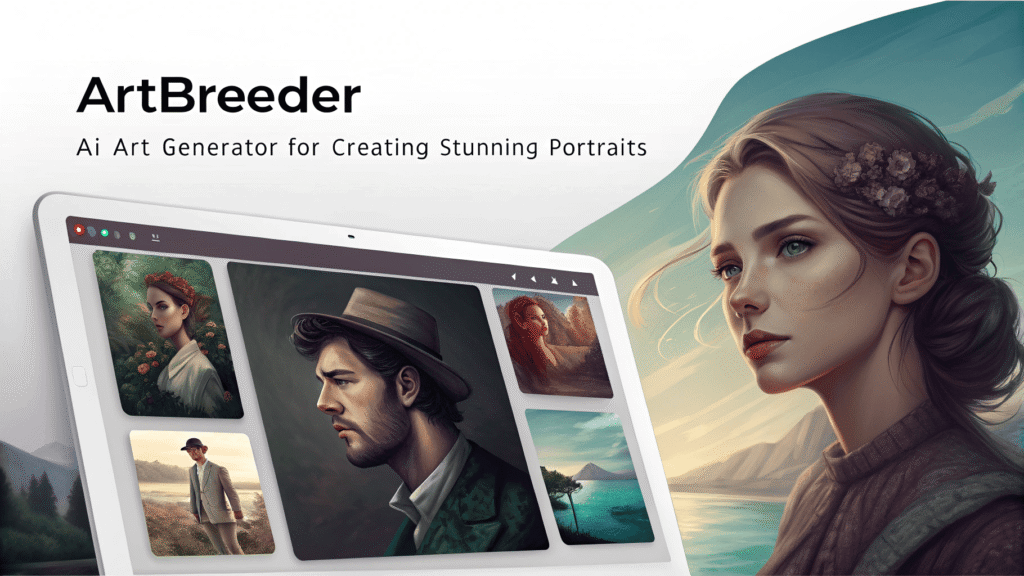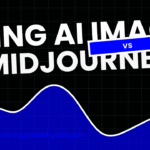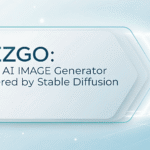
Portrait creation has long been the domain of skilled artists armed with brushes, pencils, and years of training. Traditional portraiture demanded not only technical expertise but also countless hours perfecting facial proportions, mastering light and shadow, and capturing the essence of human expression. The barrier to entry remained intimidatingly high for anyone without formal artistic education or natural drawing ability.
Artbreeder shatters these conventional limitations, placing professional-quality portrait creation within reach of anyone with a creative vision. This revolutionary AI art generator transforms the portrait-making process from a marathon of skill development into an intuitive exploration of visual possibilities. Users can craft photorealistic faces, fantasy characters, or stylised portraits through simple slider adjustments and creative experimentation.
The platform’s approach to portrait generation reflects a broader shift in creative technology—one where artificial intelligence amplifies human imagination rather than replacing it. Whether you’re a novelist seeking to visualise characters, a game developer creating diverse avatars, or simply someone fascinated by the intersection of technology and art, Artbreeder offers an accessible gateway into sophisticated portrait creation.
This accessibility doesn’t come at the expense of quality or creative control. The platform’s underlying neural networks have been trained on vast datasets of artistic styles and human features, enabling the generation of portraits that rival traditional artwork whilst offering unprecedented customisation possibilities.
Understanding Artbreeder’s Portrait Generation Technology
Artbreeder operates on a foundation of Generative Adversarial Networks (GANs), sophisticated machine learning systems that have revolutionised image synthesis. These networks consist of two competing algorithms: one generates images whilst the other evaluates their quality, creating a continuous improvement cycle that produces increasingly realistic results.
The platform’s portrait capabilities stem from its training on diverse datasets containing millions of human faces across different ethnicities, ages, and artistic styles. This extensive training enables the system to understand fundamental aspects of human facial structure whilst maintaining the flexibility to create entirely fictional characters or blend multiple influences into cohesive portraits.
Users interact with this complex technology through an elegantly simple interface. Rather than requiring technical knowledge about neural networks or machine learning, Artbreeder presents portrait creation through intuitive sliders and breeding mechanisms. Each adjustment translates into sophisticated algorithmic changes that reshape facial features, adjust lighting, or modify artistic style.
The breeding concept that gives Artbreeder its name allows users to combine different portraits, creating offspring that inherit characteristics from multiple parent images. This approach mirrors biological inheritance whilst providing precise creative control over the resulting combinations.
Key Features for Portrait Creation
Facial Feature Customisation
Artbreeder’s portrait tools offer granular control over every aspect of facial appearance. Users can adjust bone structure, eye shape, skin tone, hair colour, and countless other attributes through dedicated sliders. Each modification happens in real-time, allowing for immediate visual feedback and rapid iteration.
The system maintains facial coherence even during dramatic adjustments, ensuring that extreme modifications still result in believable human features. This stability enables users to push creative boundaries without sacrificing visual credibility.
Style and Artistic Direction
Beyond realistic portraits, Artbreeder supports various artistic styles ranging from photorealistic renderings to painterly interpretations reminiscent of classical portraiture. Users can adjust the overall aesthetic direction of their portraits, creating works that feel contemporary or classical depending on their creative vision.
The platform’s style controls interact intelligently with facial features, ensuring that artistic choices enhance rather than conflict with character design decisions. This integration prevents the disjointed feeling that can result from applying artistic filters to realistic images.
Age and Expression Control
Portrait subjects can be aged naturally through Artbreeder’s sophisticated aging algorithms, which understand how facial features change over time. The system can generate the same character at different life stages, maintaining recognisable features whilst accurately depicting age-related changes.
Expression controls enable subtle emotional adjustments that bring portraits to life. Rather than requiring separate images for different moods, users can adjust their character’s expression through simple interface modifications.
Ethnicity and Diversity Options
Artbreeder’s training data encompasses diverse human populations, enabling the creation of portraits representing various ethnic backgrounds and cultural appearances. This inclusivity ensures that creators can develop characters that reflect real-world diversity or explore cross-cultural combinations.
The platform handles ethnic characteristics with sensitivity and accuracy, avoiding the stereotypical representations that can result from less sophisticated systems. Features blend naturally, creating authentic-looking individuals rather than obvious composites.
Practical Applications for Different Users
Character Design for Creative Projects
Writers, game developers, and filmmakers use Artbreeder to visualise characters during the development process. Having concrete visual references helps maintain consistency across different media and provides clear direction for other team members who might be involved in bringing characters to life.
The platform’s ability to generate multiple variations of the same character enables exploration of different design directions before committing to final character designs. This flexibility proves particularly valuable during early creative development phases.
Educational and Historical Visualisation
Educators and historians employ Artbreeder to create visual representations of historical figures based on written descriptions or artistic interpretations. These generated portraits can make historical subjects more relatable and engaging for students whilst maintaining appropriate scholarly distance from actual historical evidence.
The technology also enables the creation of representative figures for educational materials, allowing for diverse character representation without the expense of commissioning custom artwork.
Personal and Professional Avatars
Individuals use Artbreeder to create idealised versions of themselves for professional profiles, gaming avatars, or social media representations. The platform enables users to maintain recognisable features whilst adjusting elements they wish to modify or enhance.
Professional users might generate portraits for placeholder profiles, marketing materials, or brand personas, ensuring consistent visual identity across different platforms and applications.
Artistic Exploration and Study
Traditional artists employ Artbreeder as a reference tool, generating portraits that serve as starting points for conventional artwork. The platform can provide lighting references, pose inspiration, or character design ideas that artists then interpret through their preferred medium.
Art students might use the technology to study facial structure and proportions, examining how different adjustments affect overall portrait composition and visual appeal.
Getting Started with Portrait Creation
Understanding the Interface
Artbreeder’s portrait creation begins with either a blank canvas or an existing image that serves as your starting point. The interface presents various adjustment categories, each containing multiple sliders that control specific aspects of the portrait’s appearance.
Spend time familiarising yourself with how different sliders affect the overall portrait. Small adjustments often produce more natural results than dramatic changes, particularly when you’re beginning to understand the system’s capabilities.
Developing Your Creative Vision
Before diving into technical adjustments, consider what kind of portrait you want to create. Are you visualising a specific character with particular traits, or are you exploring creative possibilities without predetermined outcomes? Having clear intentions helps guide your adjustment decisions and produces more focused results.
Create reference collections of portraits that inspire you, whether from Artbreeder’s community galleries or external sources. These references can inform your creative decisions and provide direction when you’re uncertain about specific adjustments.
Experimentation and Iteration
Artbreeder’s strength lies in its support for rapid experimentation. Don’t hesitate to make bold adjustments or try unexpected combinations. The platform’s real-time feedback means you can immediately see results and make informed decisions about whether to continue in a particular direction.
Save versions of portraits that interest you, even if they’re not your final intended result. These saved versions can serve as starting points for future projects or provide inspiration for different creative directions.
Building Character Consistency
If you’re creating multiple portraits for related projects, maintain consistency by documenting the slider settings that produce key character traits. This documentation enables you to recreate similar features across different portraits or adjust specific elements whilst preserving overall character identity.
Consider creating character families or groups by using the breeding function to generate related portraits that share common features whilst maintaining individual distinctiveness.
Advanced Techniques and Creative Strategies
Combining Multiple Influences
Advanced Artbreeder users often combine multiple portrait influences to create unique characters that wouldn’t emerge from single-source generation. This approach involves breeding portraits with different strengths—perhaps combining one portrait’s excellent bone structure with another’s compelling expression.
The key to successful combination lies in understanding which features translate well between different portraits and which elements might create visual conflicts. Experimentation reveals these relationships and builds intuitive understanding of the platform’s capabilities.
Stylistic Consistency Across Projects
Maintaining visual coherence across multiple portraits requires attention to consistent stylistic choices. Develop personal preferences for certain slider ranges or artistic directions that create recognisable aesthetic signatures across your work.
Document successful combinations of settings that produce appealing results. Building a personal library of effective techniques accelerates future project development and ensures consistent quality across different creative endeavours.
Collaborative Creation
Artbreeder’s community features enable collaborative portrait creation, where multiple users contribute to evolving portrait lineages. Participating in these collaborative efforts exposes you to different creative approaches and techniques that might not occur through individual experimentation.
Consider how your portraits might serve as foundation material for other creators, designing with both your immediate needs and potential collaborative applications in mind.
The Future of AI Portrait Generation
Artbreeder represents current capabilities in AI portrait generation, but the technology continues advancing rapidly. Future developments will likely include enhanced emotional expression, improved consistency across different artistic styles, and better integration with other creative tools and workflows.
The democratisation of portrait creation through AI tools like Artbreeder is fostering new creative communities where traditional artistic barriers no longer limit participation. This accessibility encourages diverse voices and perspectives that enrich the broader creative landscape.
As the technology matures, we can expect even more sophisticated features: improved understanding of cultural aesthetics, better temporal consistency for character aging, and enhanced artistic style transfer capabilities. These advances will further expand creative possibilities whilst maintaining the intuitive accessibility that makes current AI art tools so compelling.
For creators ready to explore AI-powered portrait generation, Artbreeder offers an ideal entry point into this rapidly evolving field. The platform balances sophisticated technology with user-friendly design, enabling both casual experimentation and serious creative development.
Start with simple adjustments, build understanding through experimentation, and discover how AI portrait generation can expand your creative toolkit. The intersection of artificial intelligence and human creativity is producing remarkable results, and every user contributes to this exciting artistic evolution.

I am Ray Jones Digital
My current occupations: a Digital Marketer, Local SEO expert, Link Builder, and WordPress SEO specialist. Shopify SEO, Ecommerce Store Management, and HTML & WordPress Developer I have been practicing the above mentioned services for more than 10 years now As an SEO expert working with your ongoing projects.



